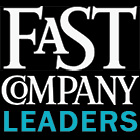The launch of
Google+ is the beginning of a fundamental change on the web. A change that will tear down silos, empower users and create opportunities to take software and collaboration to new levels.
Social features will become pervasive, and fundamental to our interaction with networked services. Collaboration from within applications will be as natural to us as searching for answers on the web is today.
It's not just about Google vs Facebook
Much attention has focused on Google+ as a
Facebook competitor, but to view the system solely within that context is short-sighted. The consequences of the launch of Google+ are wider-reaching, more exciting and undoubtedly more controversial.
Google+ is the rapidly growing seed of a web-wide social backbone, and the catalyst for the ultimate uniting of the social graph. All it will take on Google's part is a step of openness to bring about such a commoditization of the social layer. This would not only be egalitarian, but would also be the most effective competitive measure against Facebook.
As web search connects people to documents across the web, the social backbone connects people to each other directly, across the full span of web-wide activity. (For the avoidance of doubt, I take 'web' to include networked phone and tablet applications, even if the web use is invisible to the user.)
Search removed the need to remember domain names and URLs. It's a superior way to locate content. The social backbone will relieve our need to manage email addresses and save us laborious "friending" and permission-granting activity — in addition to providing other common services such as notification and sharing.
Though Google+ is the work of one company, there are good reasons to herald it as the start of a commodity social layer for the Internet. Google decided to make Google+ be part of the web and not a walled garden. There is good reason to think that represents an inclination to openness and interoperation, as I explain below.
It's time for the social layer to become a commodity
We're now several years into the era of social networks. Companies have come and gone, trying to capture the social graph and exploit it. Well intentioned but doomed grass-roots initiatives have waxed and waned. Facebook has won the platform game, being the dominant owner of our social attention, albeit mostly limited to non-workplace application.
What does this activity in social software mean? Clearly, social features are important to us as users of computers. We like to identify our friends, share with them, and meet with them. And it's not just friends. We want to identify co-workers, family, sales prospects, interesting celebrities.
Currently, we have all these groups siloed. Because we have many different contexts and levels of intimacy with people in these groups, we're inclined to use different systems to interact with them. Facebook for gaming, friends and family.
LinkedIn for customers, recruiters, sales prospects.
Twitter for friends and celebrities. And so on into specialist communities:
Instagram and
Flickr,
Yammer or
Salesforce Chatter for co-workers.
The situation is reminiscent of electronic mail before it became standardized. Differing semi-interoperable systems, many as walled gardens. Business plans predicated on somehow 'owning' the social graph. The social software scene is filled with systems that assume a closed world, making them more easily managed as businesses, but ultimately providing for an uncomfortable interface with the reality of user need.
An interoperable email system created widespread benefit, and permitted many ecosystems to emerge on top of it, both formal and ad-hoc. Email reduced distance and time between people, enabling rapid iteration of ideas, collaboration and community formation. For example, it's hard to imagine the open source revolution without email.
When the social layer becomes a standard facility, available to any application, we'll release ourselves into a world of enhanced diversity, productivity and creative opportunity. Though we don't labor as much under the constraints of distance or time as we did before email, we are confined by boundaries of data silos. Our information is owned by others, we cannot readily share what is ours, and collaboration is still mostly boxed by the confines of an application's ability.
A social backbone would also be a boost for diversity. Communities of interest would be enabled by the ready availability of social networking, without having the heavy lifting in creating the community, or run the risk of disapproval or censorship from a controlling enterprise.
The effect of email interoperability didn't just stop at enabling communication: it was a catalyst for standards in document formats and richer collaboration. The social backbone won't just make it easier to handle permissions, identity and sharing, but will naturally exert pressure for further interoperation between applications. Once their identity is united across applications, users will expect their data to travel as well.
We see already a leaning toward this interoperability: the use of Twitter, Facebook and Google as sign-on mechanisms across websites and games, attempts to federate and intermingle social software, cloud-based identity and wallet services.
What a social backbone would do
As users, what can we expect a social backbone to do for us? The point is to help computers serve us better. We naturally work in contexts that involve not only documents and information, but groups of people. When working with others, the faster and higher bandwidth the communication, the better.
To give some examples, consider workplace collaboration. Today's groupware solutions are closed worlds. It's impractical for them to encompass either a particularly flexible social model, or a rich enough variety of applications and content, so they support a restricted set of processes. A social backbone could make groupware out of every application. For the future Photoshop, iMovie and Excel, it adds the equivalent power of calling someone over and saying 'Hey, what about this?'
Or think about people you interact with. When you're with someone, everything you're currently doing with them is important. Let's say you're working with your friend Jane on the school's PTA fundraiser, and her and your kids play together. Drag Jane into your PTA and Playdates circles. Drop a letter to parents into the PTA circle, and your calendar's free/busy info into Playdates.
Now you're sharing information both of you need. Next Thursday you see Jane at school. While you're chatting, naturally the topic of playdates and the PTA come up. You bring up Jane on your phone, and there are links right there to the letter you're writing, and some suggested dates for mutually free time.
Teaching computer systems about who we know lets them make better guesses as to what we need to know, and when. My examples are merely simple increases in convenience. The history of computing frequently shows that once a platform is opened up, the creative achievements of others far exceed those dreamed of by the platform's progenitors.
The social backbone democratizes social software: developers are freed from the limitations of walled gardens, and the power to control what you do with your friends and colleagues is returned to you, the user.
Social backbone services
Which services will the social backbone provide? We can extract these from those provided by today's web and social software applications:
- Identity — authenticating you as a user, and storing information about you
- Sharing — access rights over content
- Notification — informing users of changes to content or contacts' content
- Annotation — commenting on content
- Communication — direct interaction among members of the system
These facilities are not new requirements. Each of them have been met in differing ways by existing services. Google and
Amazon serve as identity brokers with a reasonable degree of assurance, as do Twitter and Facebook, albeit with a lesser degree of trust.
A host of web services address sharing of content, though mostly focused on sharing the read permission, rather than the edit permission. Notification originated with email, graduated through RSS, and is now a major part of Twitter's significance, as well as a fundamental feature of Facebook. Annotation is as old as the web, embodied by the hyperlink, but has been most usefully realized through blogging,
Disqus, Twitter and Facebook commenting. Communication between users has been around as long as multi-user operating systems, but is most usefully implemented today in Facebook chat and instant messaging, where ad-hoc groups can easily be formed.
Why not Facebook?
Unfortunately, each of today's answers to providing these social facilities are limited by their implementation. Facebook provides the most rounded complement of social features, so it's a reasonable question to ask why Facebook itself can't provide the social backbone for the Internet.
Facebook's chief flaw is that is a closed platform. Facebook does not want to be the web. It would like to draw web citizens into itself, so it plays on the web, but in terms that leave no room for doubt where the power lies. Content items in Facebook do not have a URI, so by definition can never be part of the broader web. If you want to use Facebook's social layer, you must be part of and subject to the Facebook platform.
Additionally, there are issues with the symmetry of Facebook's friending model: it just doesn't model real life situations. Even the term 'friend' doesn't allow for the nuance that a capable web-wide social backbone needs.
This is not to set up a Facebook vs Google+ discussion, but to highlight that Facebook doesn't meet the needs of a global social backbone.
Why Google+?
Why is Google+ is the genesis of a social backbone? The simple answer is that it's the first system to combine a flexible enough social model with a widespread user base, and a company for whom exclusive ownership of the social graph isn't essential to their business.
Google also has the power to bootstrap Google+ as a social backbone: the integration of Google+ into Google's own web applications would be a powerful proving ground and advertisement for the concept.
Yet one company alone should not have the power to manage identity for everyone. A workable and safe social backbone must support competition and choice, while still retaining the benefits of the network. Email interoperability was created not by the domination of one system, but by standards for communication.
To achieve a web-wide effect, Google+ needs more openness and interoperability, which it does not yet have. The features offered by the upcoming
Google+ API will give us a strong indication of Google's attitude towards control and interoperability.
There is some substantial evidence that Google would support an open and interoperable social backbone:
- Google's prominence as a supporter of the open web, which is crucial to its business.
- The early inclination to interoperation of Google+: public content items have a URI, fallback to email is supported for contacts who are not Google+ members.
- Google is loudly trumpeting their Data Liberation Front, committed to giving users full access to their own data.
- Google has been involved in the creation of, or has supported, early stage technologies that address portions of the social backbone, including OAuth, OpenID, OpenSocial, PubSubHubbub.
- Google displays an openness to federation with interoperating systems, evinced most keenly by Joseph Smarr, the engineer behind the Google+ Circles model. The ill-fated Google Wave incorporated federation.
- The most open system possible would best benefit Google's mission in organizing the world's information, and their business in targeting relevant advertising.
Toward the social backbone
Computers ought to serve us and provide us with means of expression.
A common, expressive and interoperable social backbone will help users and software developers alike. Liberated from information silos and repeat labor of curating friends and acquaintances, we will be free to collaborate more freely. Applications will be better able to serve us as individuals, not as an abstract class of 'users'.
The road to the social backbone must be carefully trodden, with privacy a major issue. There is a tough trade-off between providing usable systems and those with enough nuance to sufficiently meet our models of collaboration and sharing.
Obstacles notwithstanding, Google+ represents the promise of a next generation of social software. Incorporating learnings from previous failures, a smattering of innovation, and a close attention to user need, it is already a success.
It requires only one further step of openness to take the Google+ product into the beginnings of a social backbone. By taking that step, Google will contribute as much to humanity as it has with search.
Edd Dumbill is the chair of O'Reilly's Strata and OSCON conferences. Find him here on Google+.
(
Google's Joseph Smarr, a member of the Google+ team, will discuss the future of the social web at OSCON. Save 20% on registration with the code OS11RAD.)
Related:

"






 Follow @FastCoLeaders for all of our leadership news, expert bloggers, and book excerpts.
Follow @FastCoLeaders for all of our leadership news, expert bloggers, and book excerpts.
